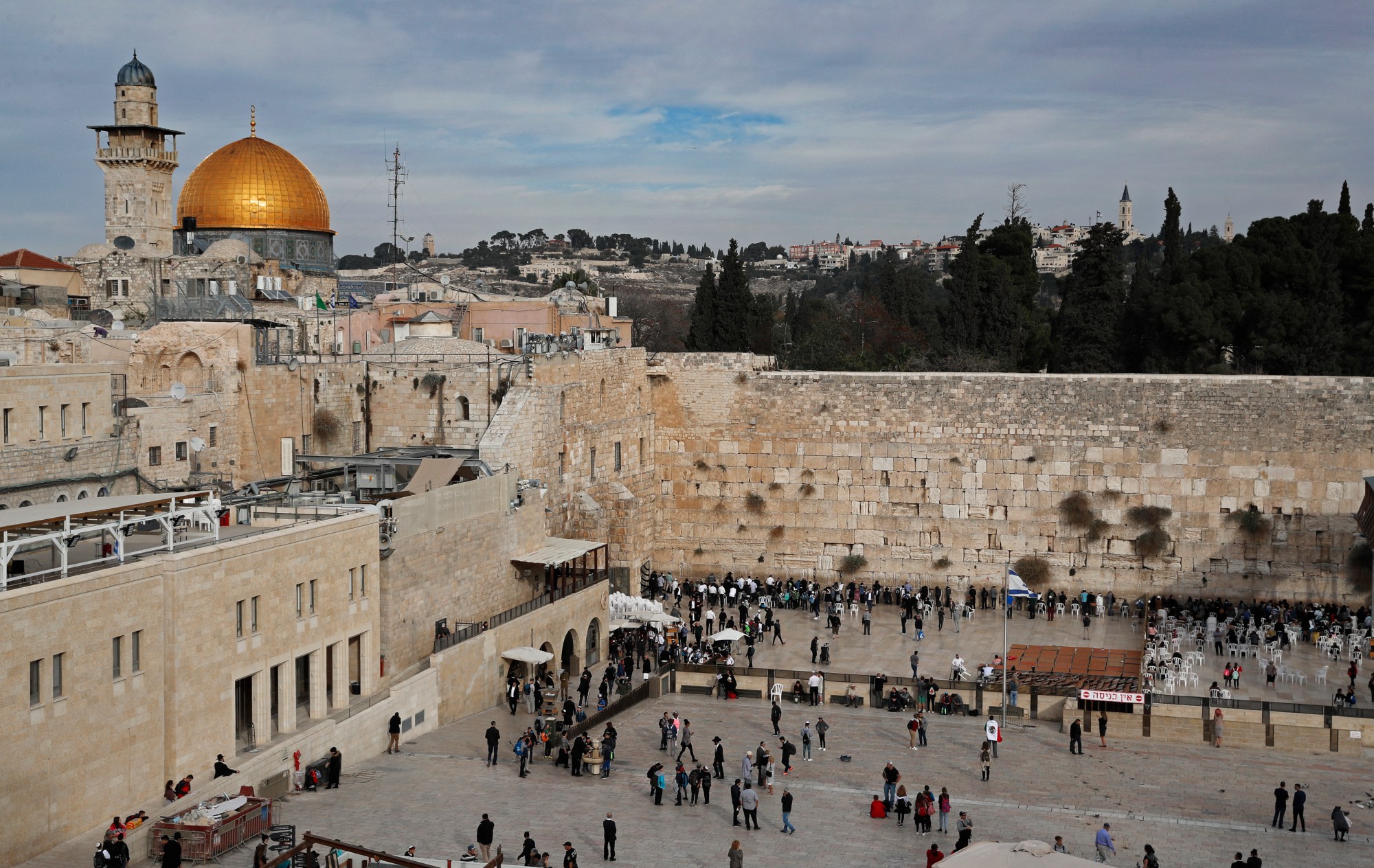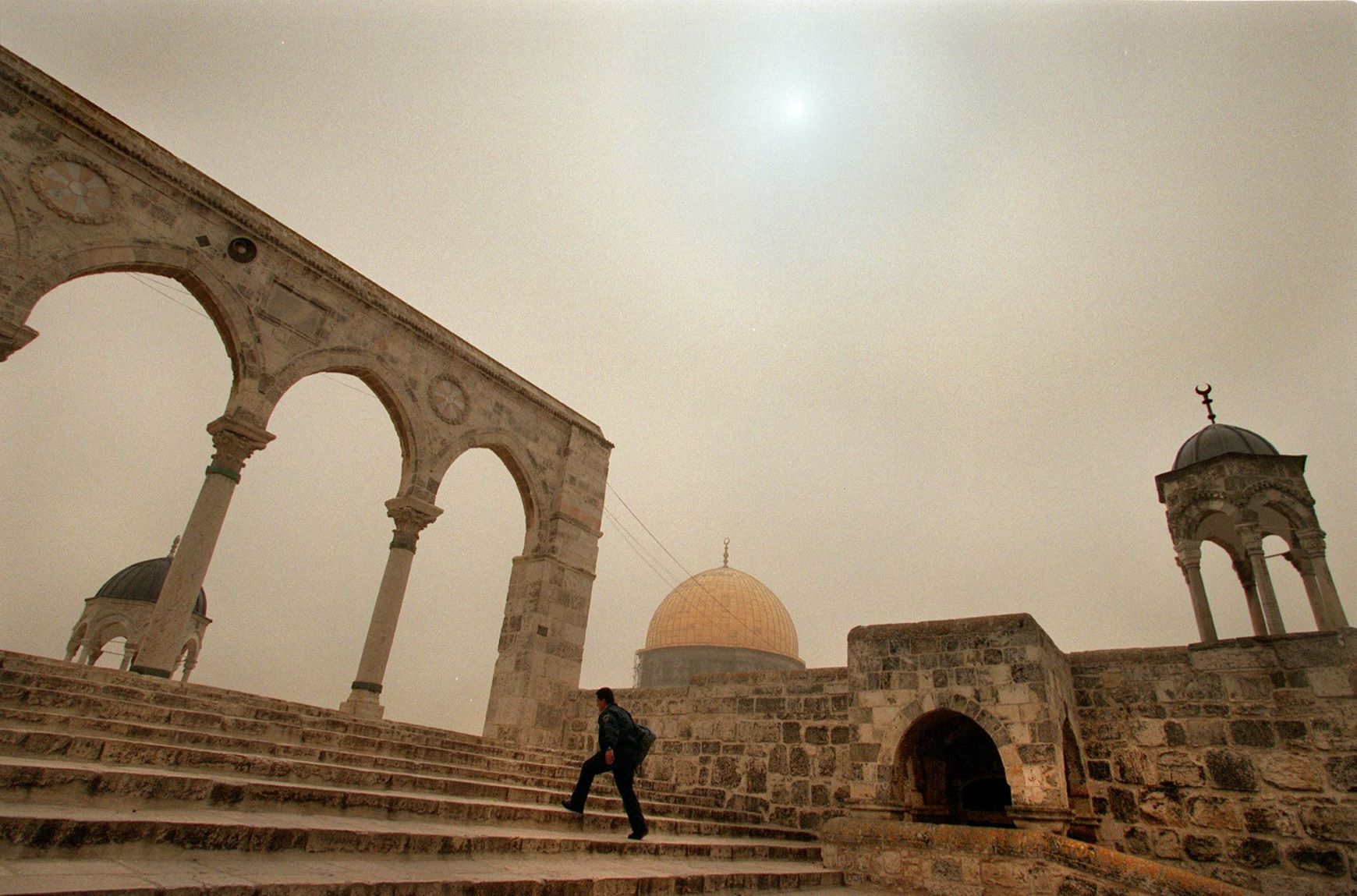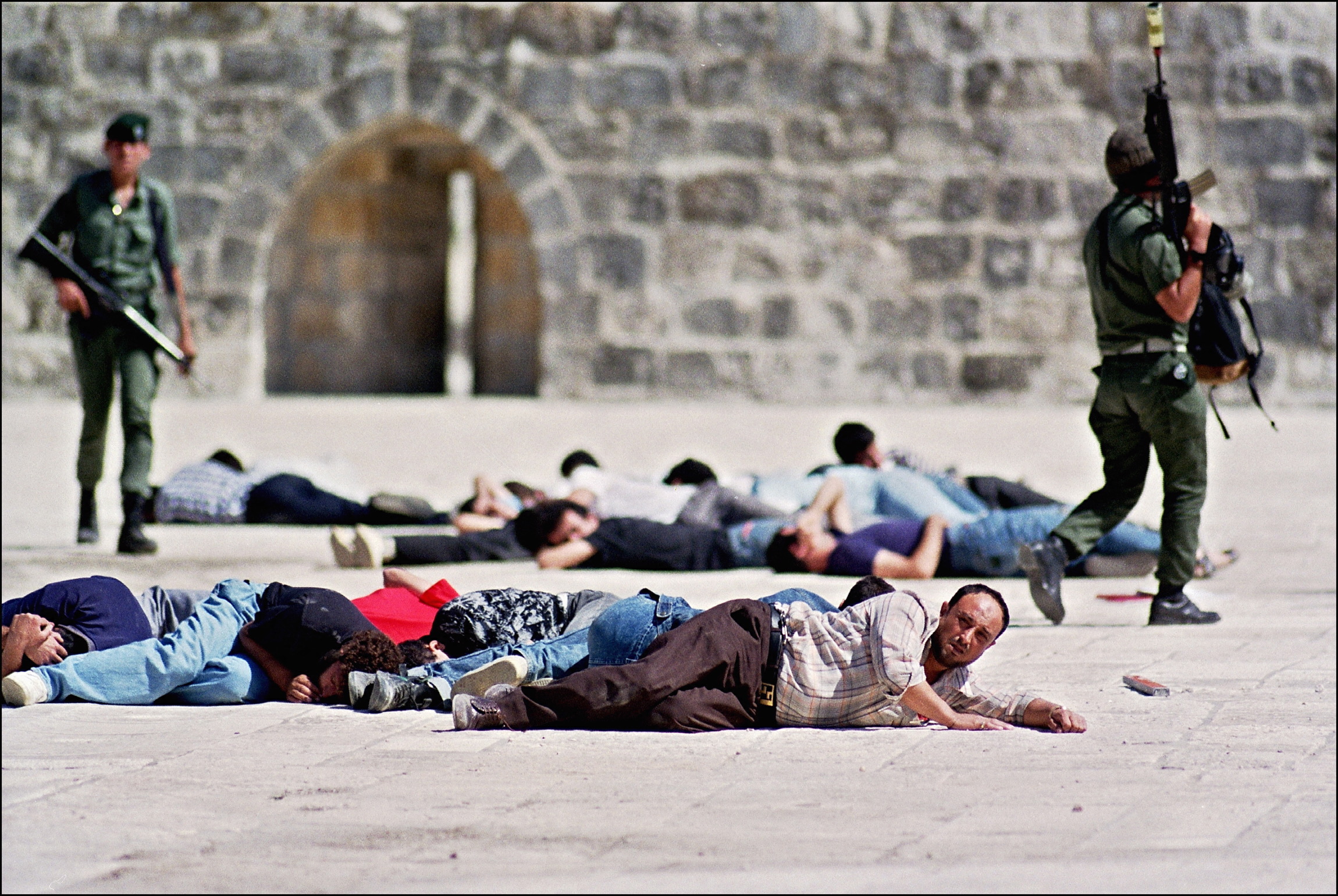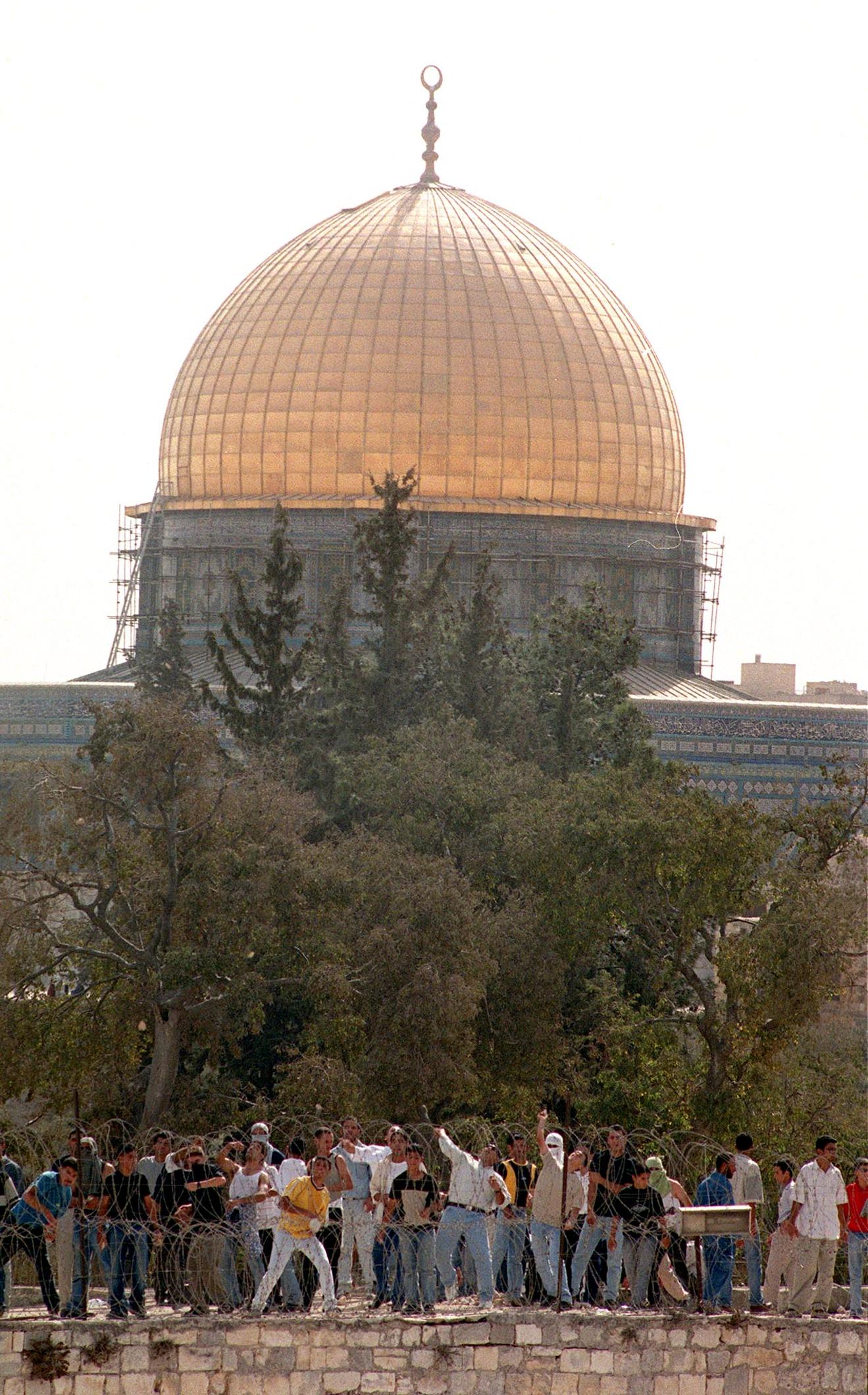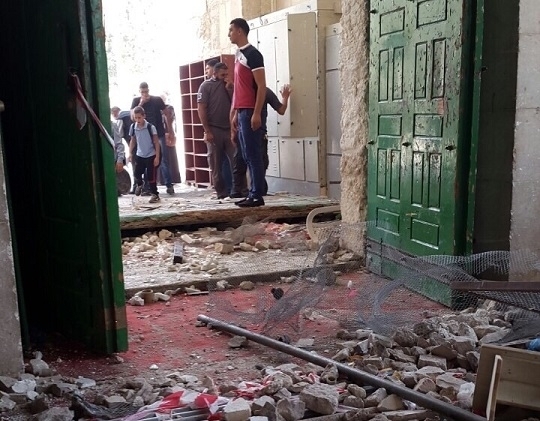Al-Aqsa: Six times Israel attacked worshippers at the sacred site

The Israeli raid on the Al-Aqsa mosque compound in occupied East Jerusalem has sent shock waves across the world and could even constitute a war crime under international law.
Over the past few weeks, Israeli forces have attacked protesters opposed to the appropriation of Palestinian homes in the occupied district of Sheikh Jarrah.
Stay informed with MEE's newsletters
Sign up to get the latest alerts, insights and analysis, starting with Turkey Unpacked
In a significant escalation of violence, Israeli police officers later attacked worshippers at the Al-Aqsa Mosque during special prayers being held for Laylat al-Qadr, the holiest night in Islam, using tear gas and other projectiles at those inside the compound. Some worshippers responded by throwing rocks at the Israeli forces.
While some have described the events at the mosque as "unprecedented", there have been several major incidents of Israeli police violence at the mosque and its immediate vicinity, which date back decades. In a non-exhaustive list below, we list six major occasions.
1. July 1988 - Archaeological dig
Fearful that an archaeological excavation close to the Al-Aqsa mosque and Western Wall would undermine the foundations of the compound, Palestinian worshippers tried to stop Israeli workers from digging into the site by throwing stones and bottles, according to a New York Times report at the time.
Israeli forces used tear gas and rubber bullets against the protesters, wounding 26 people, the newspaper said.
The dig took place during the First Intifada, or Palestinian uprising, which started in December 1987 and continued until September 1993.
2. April 1989 - Attempt to start building Third Temple
In April the following year, Israeli religious ultranationalists decided that their annual march onto the Temple Mount, the site of today's Al-Aqsa mosque complex, would involve laying a large cornerstone for the rebuilding of the Third Temple, a deliberate act of provocation, which if fulfilled would involve the leveling of the Al-Aqsa compound.
According to contemporary news reports, Muslim worshippers, who were at the mosque in large numbers due to it being Ramadan, responded with protests, which were put down by Israeli forces, using tear gas and live ammunition fired into the air.
Jewish extremist groups believe the rebuilding of the temple is a religious duty but most Orthodox Jews believe that the rebuilding will only happen with the arrival of the Jewish Messiah.
3. October 1990 - Massacre at Al-Aqsa
One of the bloodiest events at the Al-Aqsa mosque took place the following year and involved the killing by Israeli forces of around 21 Palestinians.
The killings began after a demonstration by Palestinians within the compound in response to another attempt by Jewish extremist groups to place a cornerstone for the Third Temple. Israeli police officers responded first with tear gas and later when reinforcements arrived, with automatic gunfire into the crowd.
Demonstrators had been throwing stones at Israeli forces and Israeli authorities say that protesters targeted Jewish worshippers at the Western Wall, although there were no serious injuries.
A contemporary report by the New York Times described the event as "a story of poor planning rather than malicious intent" but Palestinian leaders disagreed.
The newspaper spoke to Adnan Husseini, of the Jerusalem Islamic administrative authority, who said: ''The massacre was planned before by the Israelis to scare the Muslims so we wouldn't protest any decisions that are made about our holy places.''
4. October 2000- Sharon visit sparks the Second Intifada
The Second Intifada began at the Al-Aqsa mosque and is also known as the "Al-Aqsa Intifada".
In the instigating incident, future Israeli Prime Minister Ariel Sharon visited the compound with a security detail of around 400 soldiers, sparking protests, to which the Israelis responded by firing tear gas canisters and rubber bullets.
Israeli forces opened fire elsewhere in occupied East Jerusalem and the occupied West Bank, killing six people and sparking an uprising, which would result in the deaths of 6,371 Palestinians at the hands of Israeli soldiers, of whom 1317 were children, according to B'Tselem.
Palestinians, either acting alone or members of armed groups, killed 1,083 Israelis during the intifada, according to the Israeli rights group.
5. September 2015 - Mosque visits by extremists groups spark protests
When Israel captured East Jerusalem in 1967 and began its occupation, it reached an agreement with the Islamic endowment authority, the Waqf, which administered the site, that it would not allow non-Muslim prayer on the site of Al-Aqsa mosque.
That commitment has been tested in recent decades as Jewish and other non-Muslim groups attempt to make more frequent visits to the site.
By 2015, Jewish extremist groups were making more frequent visits to the complex, which were preceded by the removal of Muslim worshippers from the site by Israeli forces.
This raised Palestinian fears that the Israelis were going to renege on the deal, and when on one Sunday in September 2015, worshippers were removed from the compound after dawn prayers in order to allow a visit by right-wing Israelis, protests immediately broke out. Israeli soldiers responded with tear gas and rubber bullets and by barricading worshippers inside the mosque.
Videos taken during the attack showed plumes of tear gas smoke spreading across the mosque as worshippers fled for safety.
6. July 2017 - 'Day of rage'
Israel introduced metal detectors and facial-recognition security cameras at the Al-Aqsa mosque complex after two Israeli soldiers were killed by gunmen close to the area.
The decision led to widespread anger among Palestinian, who responded with protests and by refusing to pass through the detectors. Israeli forces, in their response, deployed tear gas and rubber bullets against the protesters, as tensions inflamed further.
Elsewhere in occupied East Jerusalem and the West Bank, the unrest turned deadly with eight people killed before Palestinian activists called for a "day of rage".
Faced with the mounting unrest, Israeli Prime Minister Benjamin Netanyahu ordered a partial climbdown, removing the metal barriers but keeping the cameras.
Middle East Eye delivers independent and unrivalled coverage and analysis of the Middle East, North Africa and beyond. To learn more about republishing this content and the associated fees, please fill out this form. More about MEE can be found here.



